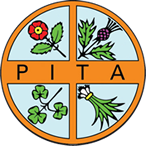25 Jan. 2022. The Swedish furniture company, Ikea, has just announced it will be plastic-free in six years’ time, using more renewable materials such as paper to protect its products.
In the past few years, the furniture giant IKEA has propelled itself towards being one of the most sustainable retailers in the world, with a series of announcements and pledges about becoming a more circular company.
Two years ago, it announced that it would be investing €200 million to reduce its greenhouse gas emissions by at least 15% across the entire IKEA value chain, making the company ‘climate positive’. It followed this with a bold plan to reinvent the company’s business strategy to make all its products more circular, designing them to be reused, repaired, upgraded, or recycled rather sent to landfill or the incinerator.
Now, the Swedish retailer has pledged to eliminate all plastic packaging for its products by 2028, phasing out the remaining 10% of its packaging that still uses plastic and replacing it with more sustainable materials such as paper and cardboard.
A Commitment To Sustainability
Of course, IKEA has long been a fan of cardboard – any trip to the superstore almost always ends with the recycling box full to the brim. But with plans for products such as LED light bulbs being protected by cardboard rather than plastic, it looks like you’re going to need a bigger box.
“Phasing out plastic in consumer packaging is the next big step on our journey to make packaging solutions more sustainable and support the overall commitment to reduce plastic pollution and develop packaging from renewable and recycled materials,” said Erik Olsen, IKEA’s Packaging and Identification Manager. “The shift will happen progressively over the coming years, and mainly be focusing on paper as it is recyclable, renewable, and widely recycled across the world.”
Paper: The Circular Champion
Replacing 10% of IKEA’s plastic packaging with more renewable materials such as paper may not sound like much, but the company produce a phenomenal amount of packaging. Every year, IKEA spends more than one billion euros on around 920,000 tons of material, and the movement away from plastic will require the engineering of new solutions, as well as close collaboration with product development teams and suppliers across the world.
While the company is exploring a number of different options, such as mushroom-based packaging or waste textiles from its manufacturing plants, paper seems to be the obvious choice when it comes to replacing plastic.
“Paper is a very good material to use because it does come from renewable sources,” says Maja Kjellberg, Packaging Innovation Leader at IKEA, “and it has quite strong circular capabilities.”
In 2020, a total of 56 million tonnes of paper was collected and recycled in Europe – a recycling rate of 74%. This is approaching the estimated practical maximum of 78%. For paper packaging, the recycling rate is even higher, with 83% of paper and cardboard packaging being recycled in Europe. Paper is highly recycled and, in Europe, re-used an average of 3.8 times. 56% of the fibrous raw material used in Europe’s paper industry comes from paper for recycling.
Where IKEA Leads…
Whether it’s furniture design, marketing campaigns or the in-store experience, IKEA has always been ahead of its rivals when it comes to retail innovation. And now, with its groundbreaking work in shifting towards a circular economy, it’s not only demonstrating the value of being sustainable but providing a valuable blueprint for other companies to follow.
by Sam Upton https://www.twosides.info/UK/ikea
